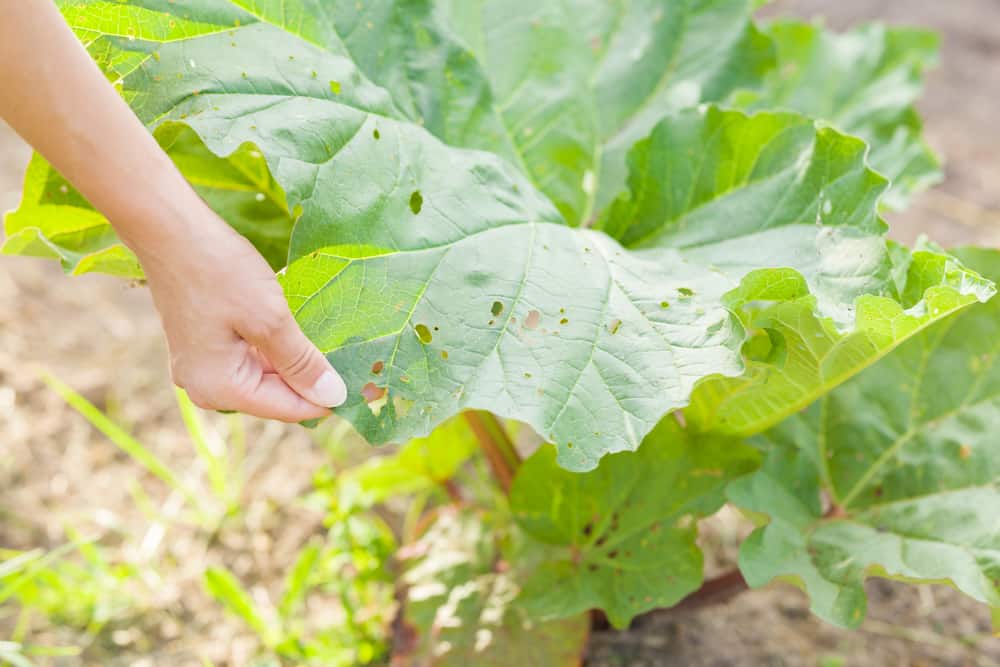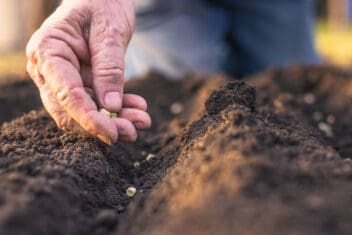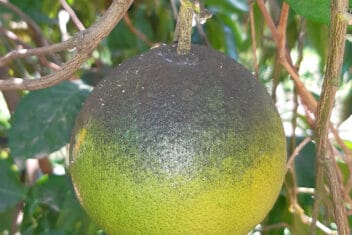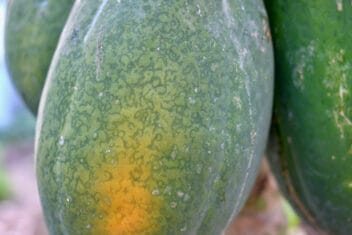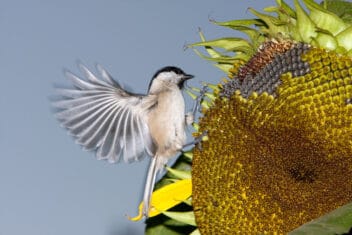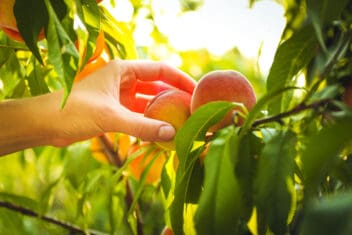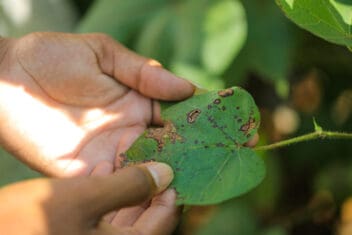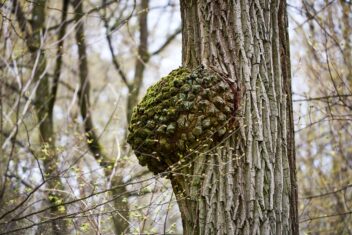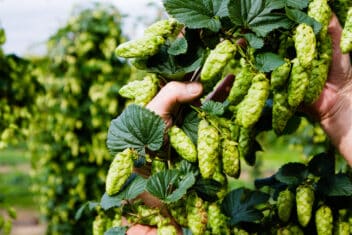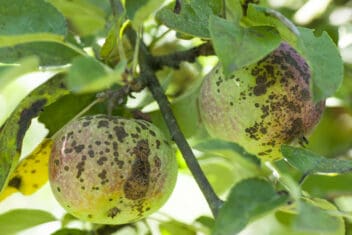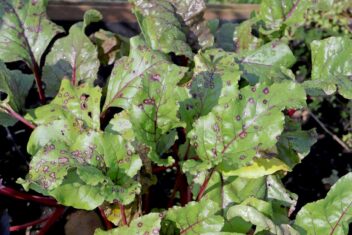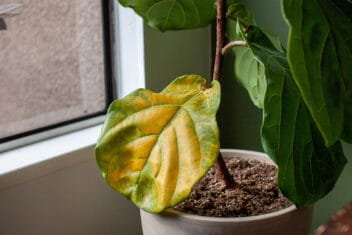There’s something fresh and summery about a rhubarb bed growing tall in the sunlight. It’s one of the first harvests of the season, and the tangy, sour taste of rhubarb balances out all the sweet, soft spring flavors perfectly.
We can pick rhubarb from late April to early August in the northeast and mix it into every meal as a sweet, slightly bitter summertime bite.
But rhubarb problems like pests and diseases can put a stop to your dining plans. Let’s talk about 10 of the most common rhubarb-growing issues you might experience.
Overcoming Rhubarb Problems
I can rhubarb every year – adding it to marmalades and jellies, chutneys, and syrups. All through the winter, rhubarb is around to brighten up my meals and bring a taste of sunshine to the dark winter days.
Rhubarb is easy to grow anywhere the winter temperatures get cold enough to freeze – it needs a period of deep cold to truly thrive. The cold weather forces rhubarb into dormancy and gives it a chance to return renewed in the spring.
With full sunlight, cold winters, and plenty of rich, loamy soil, rhubarb is a happy, easy-to-manage vegetable. The stalks are delicious, and the leaves – while toxic to consume – make an excellent insect repellent. I’ll often pick one to wear on my head while working in the garden. It looks pretty silly, but it works.
While rhubarb is a hardy plant, with few needs, it can fall prey to a few pests and diseases. Fortunately, this tough member of the buckwheat family rarely fails to win out over its attackers. A healthy, established stand of rhubarb can withstand a lot.
That’s not to say that nothing can harm them. There are several rhubarb problems that can destroy your crop.
In most cases, rhubarb pests are smaller and slower at damaging your plants, while a few diseases are downright deadly.
Rhubarb plants will occasionally have issues with fungal diseases. Most of these won’t significantly damage the plant, though one is deadly. As with pests, maintaining a healthy garden is one of the best ways to keep your rhubarb plants safe.
Weed consistently, amend the soil as needed, and keep your garden beds free of clutter and debris. With plenty of airflow between plants, clean soil, and lots of sunshine, your rhubarb plants will be healthy enough to withstand most potential diseases.
1. Herbivores
My goats are the only pests I’ve ever seen on my rhubarb plants. Rhubarb is unsafe for goats and sheep to consume, but they make a beeline for my plants whenever they get loose and never get sick.
Deer, elk, and possum will also snack on rhubarb when there isn’t anything more appealing around. A small fence can protect your plants from these rhubarb problems.
2. Slugs and Snails
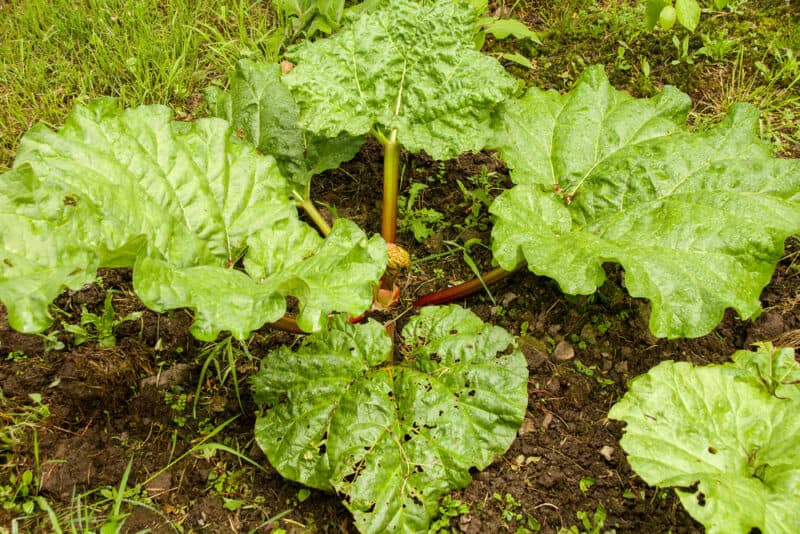
Slugs and snails are the bane of every garden, especially in wet seasons when the ground is such a happy place for these little pests. Last summer, we had slugs throughout our garden, and I had to pen the ducks in the garden for weeks to get rid of them.
Slugs and snails primarily eat the leaves of your rhubarb plants. Since you don’t eat the leaves, it’s usually not a major issue. Healthy rhubarb plants can withstand quite a bit of slug damage without missing a beat.
As the leaves get older and tougher, even the slugs will leave them alone. They prefer young, tender leaves, so they’ll move toward your greens and cabbages.
But just because it’s unlikely the slugs and snails will be fatal doesn’t mean you want to feed them all spring long. The best way to get rid of slugs and snails is by making the area around your rhubarb inhospitable to them.
Weed out the rhubarb bed regularly and sprinkle diatomaceous earth around the plants to keep them safe from marauding snails and slugs.
3. Curculio Beetle

Another pest that may damage your rhubarb is the curculio beetle (Curculio spp.). This half-inch long, yellowish-brown beetle has a long, sucking snout that it uses to bore tiny holes in rhubarb stems. Curculios lay their dark eggs in the stems, causing black spots to appear.
Unfortunately, curculios are tough enough to withstand pesticidal sprays. Hand-pick these little pests off, feed them to your chickens, or pop them into a jar of oil or kerosene to kill them.
When it comes to rhubarb problems, this pest is more damaging than others, but it’s also less common.
4. Aphids
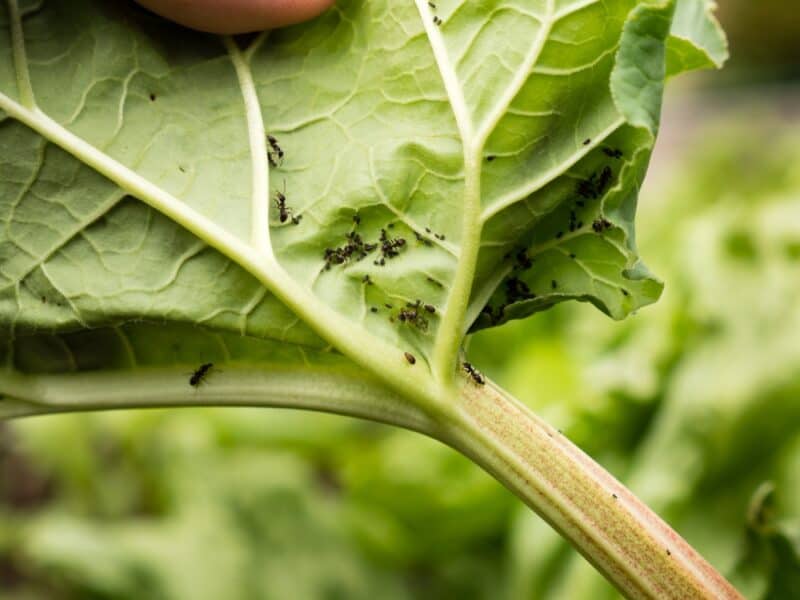
Black bean aphids (Aphis fabae) love rhubarb. They’ll cluster on the undersides of the leaves and along the stalks, and they’ll use their sucking mouthparts to feed on the sap of the plant.
They attract ants and leave sticky honeydew behind, as well as causing the leaves to curl up at the edges. A big infestation can cause yellowing leaves and stunted growth.
Our guide will help you figure out how to get rid of them so you can move onto dealing with other rhubarb problems if they pop up.
5. Crown Rot
Crown rot (Phytophthora spp.) is the worst disease rhubarb plants can get. It is fatal to the plant, so prevention is the only option here. Crown rot is a fungal disease that causes the plant’s crown to rot away.
When the soil around your rhubarb plant remains waterlogged for days or weeks, various fungi proliferate on and around the plant. Those fungi thrive in the soggy ground and begin to devour the crown of the rhubarb plant.
Within weeks the whole plant will be reduced to a mushy, rotten mess. If you see signs of crown rot, uproot the entire plant and burn it to prevent the spread of this disease. Don’t plant rhubarb in the same place for a few years, and solarize your soil to kill any remaining fungi.
Of all the rhubarb problems you might encounter, this is one of the worst.
6. Rust
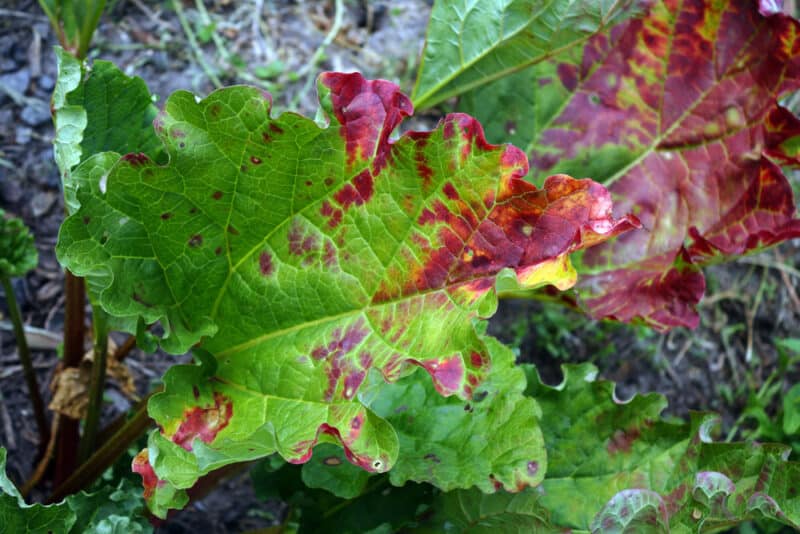
This fungus causes rustly colored orange or red spots on the leaves and occasionally on the stems of rhubarb plants. Like most fungi, rust occurs when your plant gets too much water and not enough airflow. Rust can damage the plant’s crown, but not to the extreme degree that crown rot will.
Remove all badly affected leaves and stems when you see signs of rust on your rhubarb plant. Don’t put them in the compost – burn them if possible or throw them in the trash. Then, clear away all the weeds and debris around your rhubarb plant.
If your plant is putting up a lot of small stalks, harvest about half of the healthy stalks to increase airflow around the plant and maximize sunlight.
Don’t over-fertilize your rhubarb, either. Avoid nitrogen-based fertilizers particularly, as they increase new, leafy growth, which will be easy prey for rust. Improper fertilization can lead to a lot of rhubarb problems.
7. Ascochyta Leaf Spot

This fungal infection begins as tiny, greenish-yellow spots on rhubarb leaves. The spots gradually grow – producing white centers flanked by yellow and brown, withering edges. Eventually, the center of the spot rots away completely, leaving a ragged-edged hole in the leaf.
Remove the infected leaves and improve overall garden hygiene. This will help prevent other rhubarb problems, too. You can successfully treat this fungus with a copper-based spray for severe infections.
8. Anthracnose Stalk Rot
Stalk rot is one of the most frustrating diseases in your rhubarb bed. This disease starts by producing wilting leaves and large, ugly lesions on the stems. The leaves wilt because the affected stems can no longer support them. As the lesions grow, they turn black and weaken the entire stem – causing them to twist and collapse.
Remove any stems showing signs of stalk rot and burn them. Don’t eat or can them, even if you remove the lesion. Anthracnose stalk rot usually only affects sickly or stressed plants, so healthy garden habits are key to preventing this disease.
9. Ramularia Leaf Spot
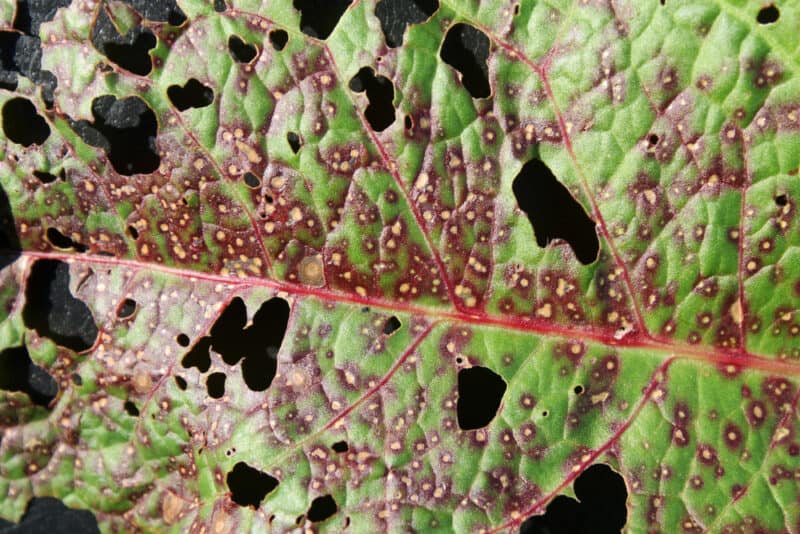
This fungal disease is called “leaf spot” because it starts by affecting the leaves. But ramularia will quickly spread to the stalks as well. As with ascochyta leaf spot, ramularia starts with quickly growing spots on affected leaves. Ramularia spots are small and red. They turn whitish with purple halos as they grow before sinking into rotted lesions.
The stalk spots lengthen and spread up the stalk, creating rotten lesions and ruining your stalks. Don’t eat affected stalks, and keep all damaged plants out of the compost.
These fungi can spread through splashing water and on the wind, so remove affected leaves and stems as quickly as possible. Copper sprays can be effective against ramularia leaf spot, so along with hygienic practices, don’t be afraid to use a copper-based fungal spray.
10. Weak Stalks
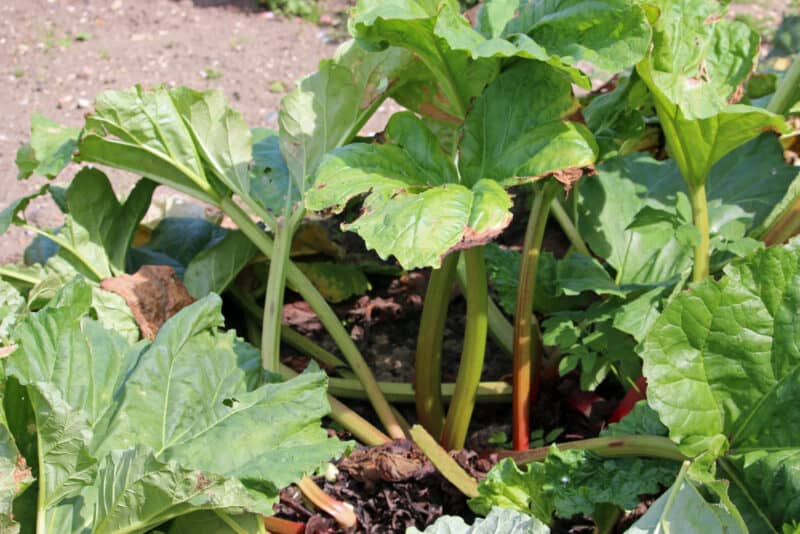
Occasionally, a rhubarb bed just seems weak. It isn’t thriving as it used to, but it isn’t diseased or infested either. If your rhubarb suffers from an indefinable malaise, it may need to be divided.
Rhubarb spreads through roots. A healthy, well-tended patch of rhubarbs should be divided every 3-5 years. But often, our plants are doing so well that we don’t want to change anything.
I’ve seen rhubarb plants left alone and undivided for over ten years. They don’t produce well, but there’s a huge, healthy root under the soil. One plant can fill a new row with healthy plants when dug up and divided.
Suppose your rhubarb gets sick often, despite all your weeding and care. Or, if it seems healthy but only puts out small, slender stalks, you may need to divide your rhubarb plant.
Dig out the plant and carefully break the old crown into two or three pieces with a few buds in each section. Then, plant them in rich, well-draining soil. Make sure the crowns are just below the surface of the soil.
If it’s been a long time since your rhubarb has been divided, it may simply fall apart into multiple sections on its own. I once dug up “one” plant that split into six large, healthy plants as soon as they were out of the soil.
Divide rhubarb in the spring or fall, but don’t expect a harvest from newly divided plants for at least a year after the move.
